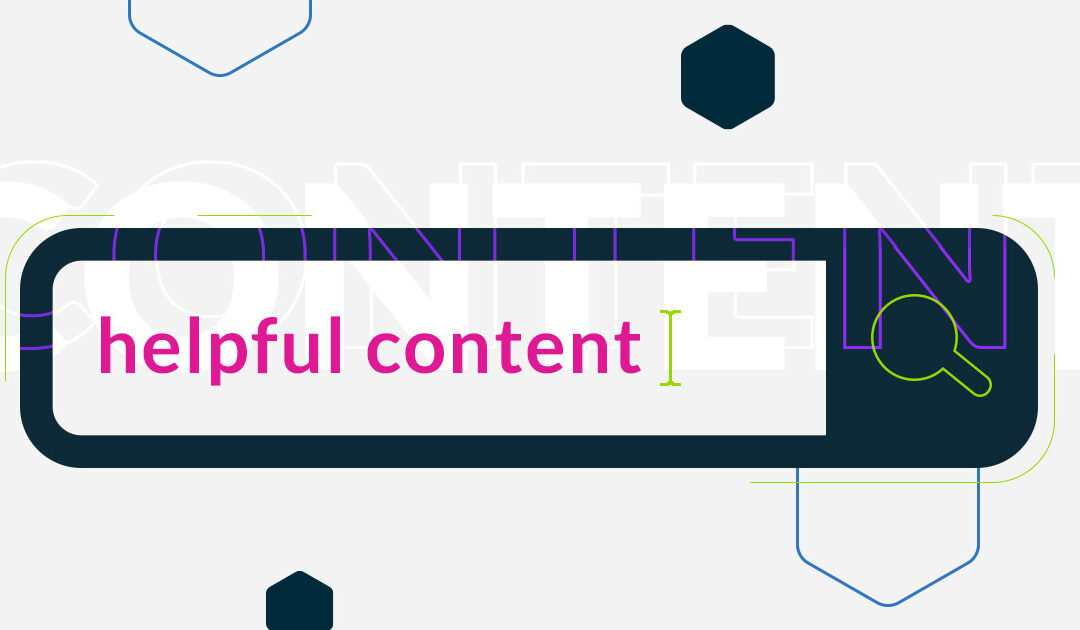Know What You Have So You Can Know What You Need With a Content Analysis
I’m a writer so I love content, but I’m an even bigger fan of the content strategy. Who doesn’t love a good spreadsheet? Basically, I’m not a fan of disorder–I could have coined the phrase “a place for everything and everything in its place.” While it bugs my husband whenever he can’t find something in the same place he left it, my almost obsessive need to organize really comes in handy in my job – and especially when developing a content strategy.
But there’s another step that brings even more glorious order to a content strategy. I’m talking about the strategy before the content strategy. The content audit.
If your business is anything like most, you have a disorganized vault of content that likely includes blog posts, videos, whitepapers, how-to guides, one-pagers, service briefs, advertising, data sheets and more.
When you have a lot of disparate content, there are a few things that are probably true:
- Some of it is outdated and is no longer serving a helpful purpose to your audience
- Much of your content falls into one stage of the buyer’s journey, leaving gaps at other stages where your audience isn’t being properly served
- The different types of content aren’t being properly leveraged for the right stage of the buyer’s journey
- You have minimal knowledge, if any, of how your audience is interacting with your content, and what type of content is working better than others
- Your content is difficult to find and isn’t readily available when your audience could benefit most from it
If any of those statements ring true for you, you need a content audit to kick off an effective, productive content strategy and help you get on the right track.
Don’t Start a Content Strategy in the Middle
Ever since digital marketing began turning everyone’s attention to the importance of search engine optimization and lead nurturing through the buyer’s journey, businesses everywhere have been told to focus on content, content, content.
While focusing on content production is great, it can be problematic if one (or all) of these scenarios occur:
- You fail to assess your audience personas
- You fail to audit the content you have already produced
- You create content without a strategy behind it
In each of these scenarios, the biggest issue is that your content strategy isn’t starting at the beginning; rather, somewhere in the middle. Each step should flow logically into the next, leading you to an informed content strategy.
For the sake of this post, we’re going to assume you have a clear understanding of your audience personas–who they are, where they are, their pain points, and where they get their information (to name a few criteria)–and focus on step 2: auditing content you have already produced. (This is also where a love of organization is an asset).
Why Conduct an Audit as Part of Your Content Marketing Strategy?
We know a content audit helps drive your content strategy–but how? Here are two reasons why a content audit so important:
- It Helps You Understand What Content You Have to Work WithThink of your existing content like a thrift store. Even if some of it is dated, it can be given a fresh coat of paint, so to speak, to satisfy the information your current audience is looking for at different stages of the buyer’s journey. That white paper from a few years ago may still discuss a highly relevant topic, but simply needs to be updated with recent information or a fresh look and feel to make it timely again.
- It Helps Ensure Continuity in the Buyer’s JourneyPlain and simple, and as the title of this post suggests, knowing what you have is the only way to know what you need. You can assess which stages of the buyer’s journey you have covered, and where there are gaps. In an ideal scenario, you should have be offering your audience different types of content from their awareness stage through their decision stage–and beyond. Conducting a content audit is the only way to know if you have, for example, a majority of awareness-stage content, leaving everyone at the consideration stage with nothing to keep them interested.
How to Conduct a Successful Audit for Your Content Strategy That Won’t Traumatize You
Combing through what could be years worth of content is daunting. The enormity of this task is why content begins gathering dust in the first place. That’s why I’m offering up some simple tips to help make the process less traumatizing and tedious, and more impactful in the end.
- Pre-Determine Some Filtering CriteriaDepending on the size of your organization, you may have content dating back many years that you know isn’t relevant and cannot be revitalized. Set a year at which you will start auditing content; i.e. 2015 to present.
- Know What Content Your Audience Needs MostSince we’re assuming you have developed your audience personas, you know what their pain points are. Focus on auditing the content that speaks to these pain points. You may think you have too much content about a specific topic, but if it’s something you know your audience wants, you need to fully cover the subject.
- Remain Open-Minded About Your Content MarketingNew content can be born from old content–like the thrift store comparison. You will come across content that is off-brand or poor quality, but keep track of any relevant subject matter that can be born from this old content. Additionally, if you come across a lengthy presentation or white paper that just doesn’t fit into your current content dissemination needs, think about whether you can take parts of that content and create shorter, more impactful assets. For instance, can that presentation become an interactive eBook? Can that white paper become a snazzy infographic?
- Keep Track of Key InformationAs you go through your audit, the most important thing is to keep detailed information about what you’re finding. The best format for doing so is an Excel or Google spreadsheet, and I recommend keeping track of the following details:
- Content title
- A brief description of the subject matter
- Content type (white paper, PowerPoint presentation, etc.)
- Date created
- Location of content and a link to the content if applicable
- Stage of the buyer’s journey (Awareness, Consideration, Decision, Evangelist)
- Recommendation for repurposing (can this content be turned into a different type of asset? If so, what? Can this content be refreshed to discuss this topic in a more current way? If so, how?)
- Other notes (this is where you would make any comments about the content that don’t fit into one of the other categories, even something as simple as “link doesn’t work”)
So I’ve Done My Audit. What’s Next for My Content Strategy?
Once you’ve completed your content audit, you now have a comprehensive record of every piece of content.
Knowing what you have allows you to easily execute several key steps toward building a successful content strategy:
- You can now pinpoint specific pieces of content from the audit that can simply be taken and reused immediately. Think about email drip campaigns or social media content–all relevant content from your audit can be used toward these impactful lead-generation efforts.
- You can now turn to your audited content to spark inspiration for new content topics or types. This is where the recommendations for repurposing really come in handy.
- You can now identify any gaps in stages of the buyer’s journey and begin focusing on creating content that can fill those gaps, improve overall lead generation, and elevate your brand as a thought leader.
The goal of an audit is to organize your content and help your content strategy be as successful as possible. When you can see what you have, it’s much easier to see what you need. And your audience will notice when their needs are being met by content that is more targeted to their pain points and finds them at the right stage of their journey toward becoming a customer.












